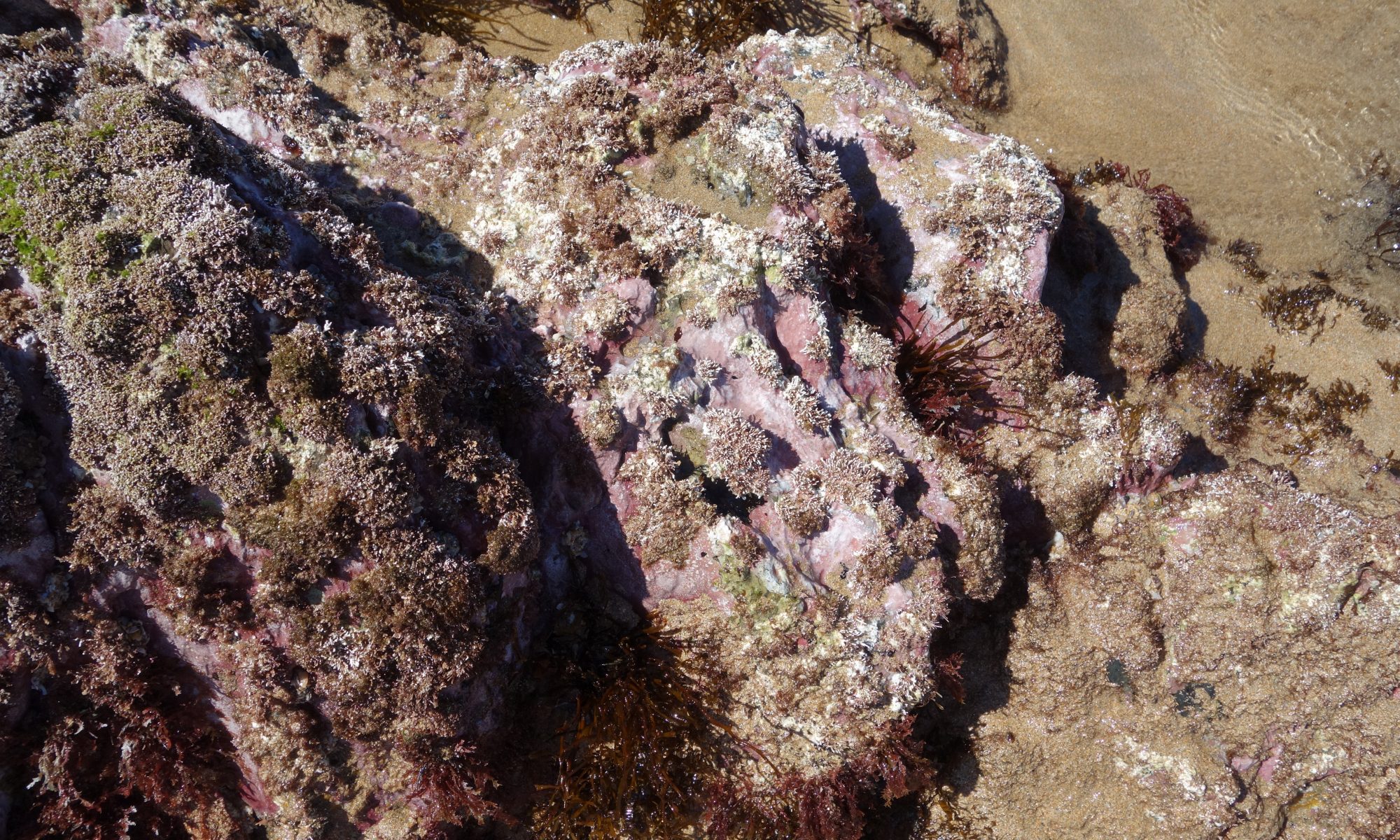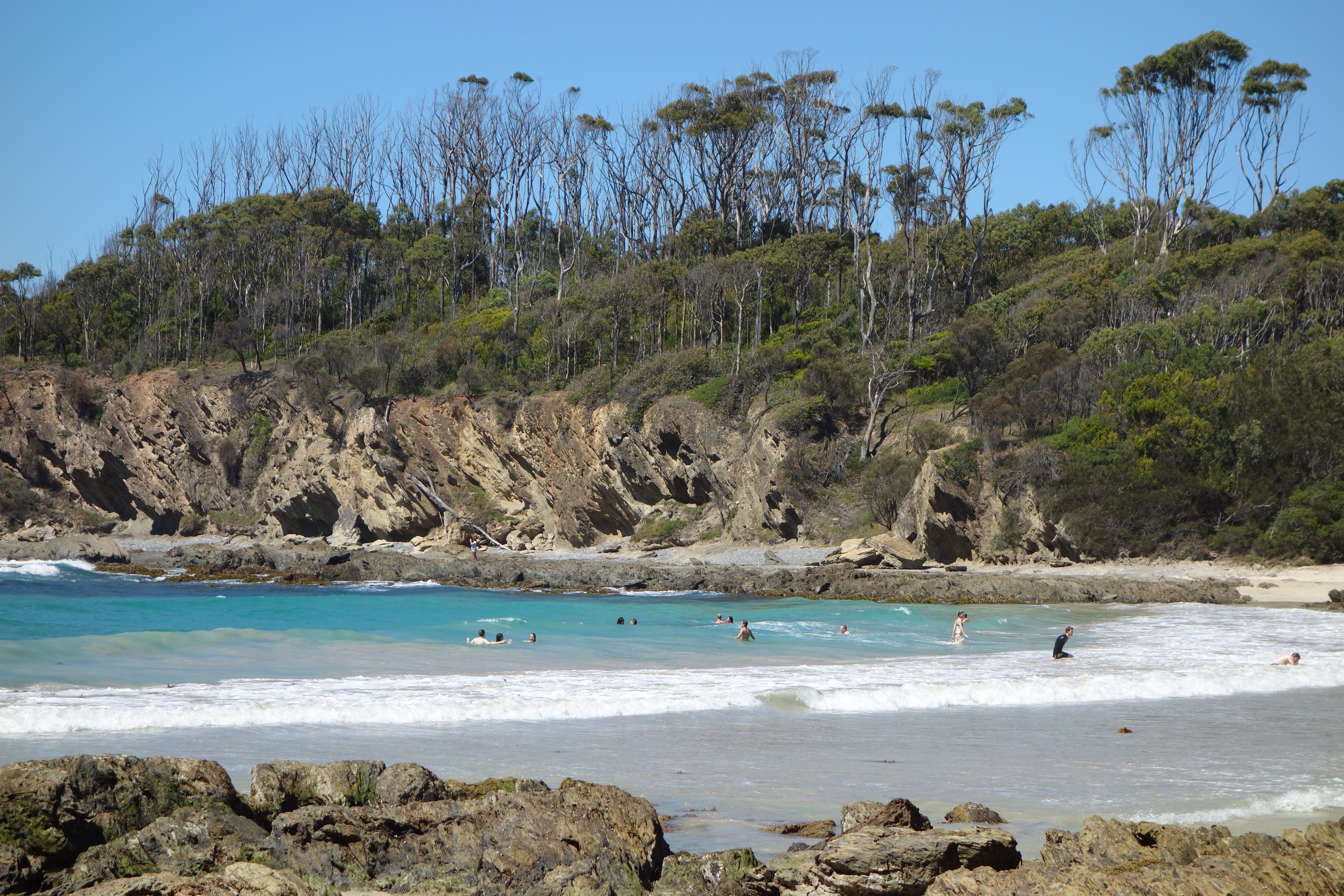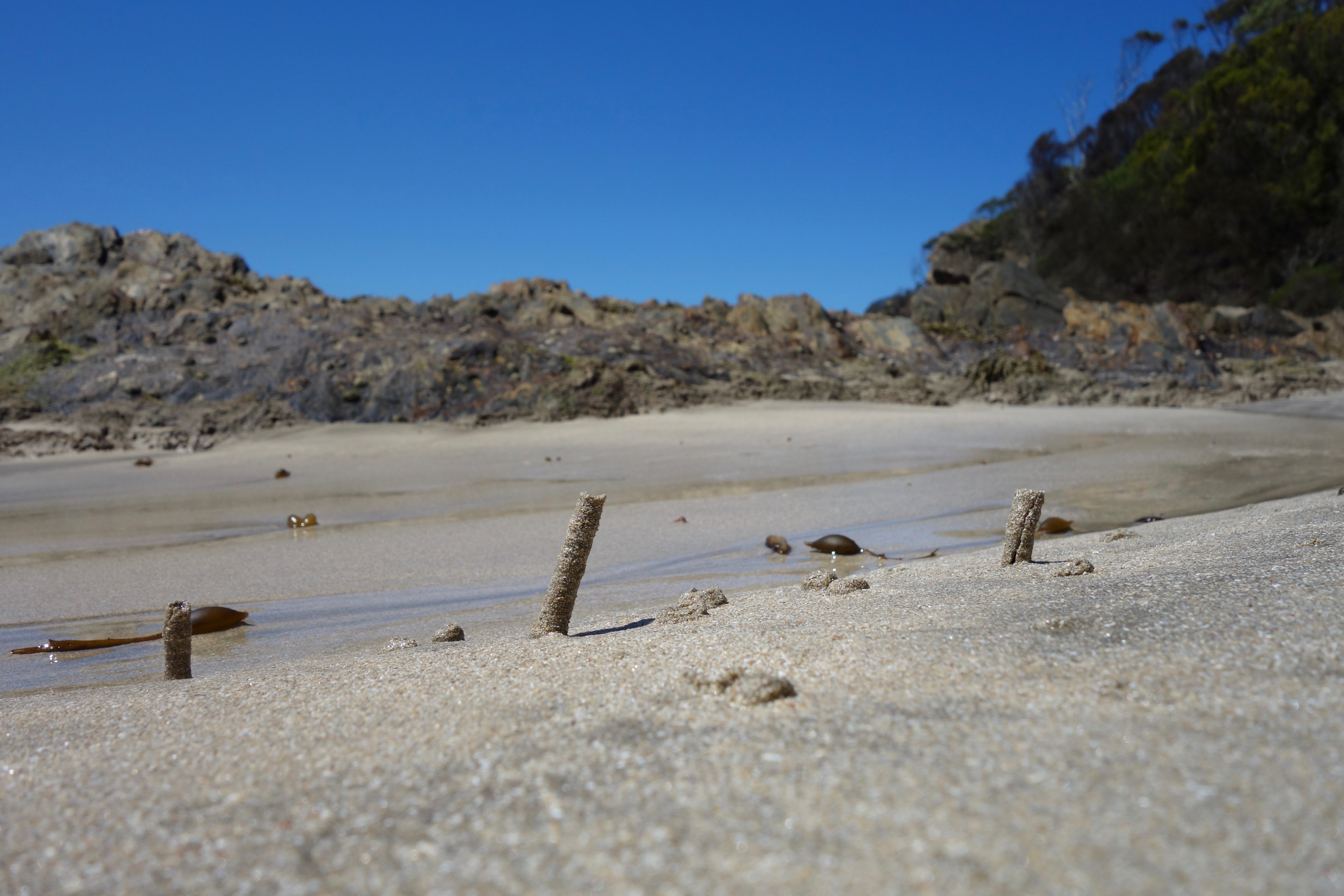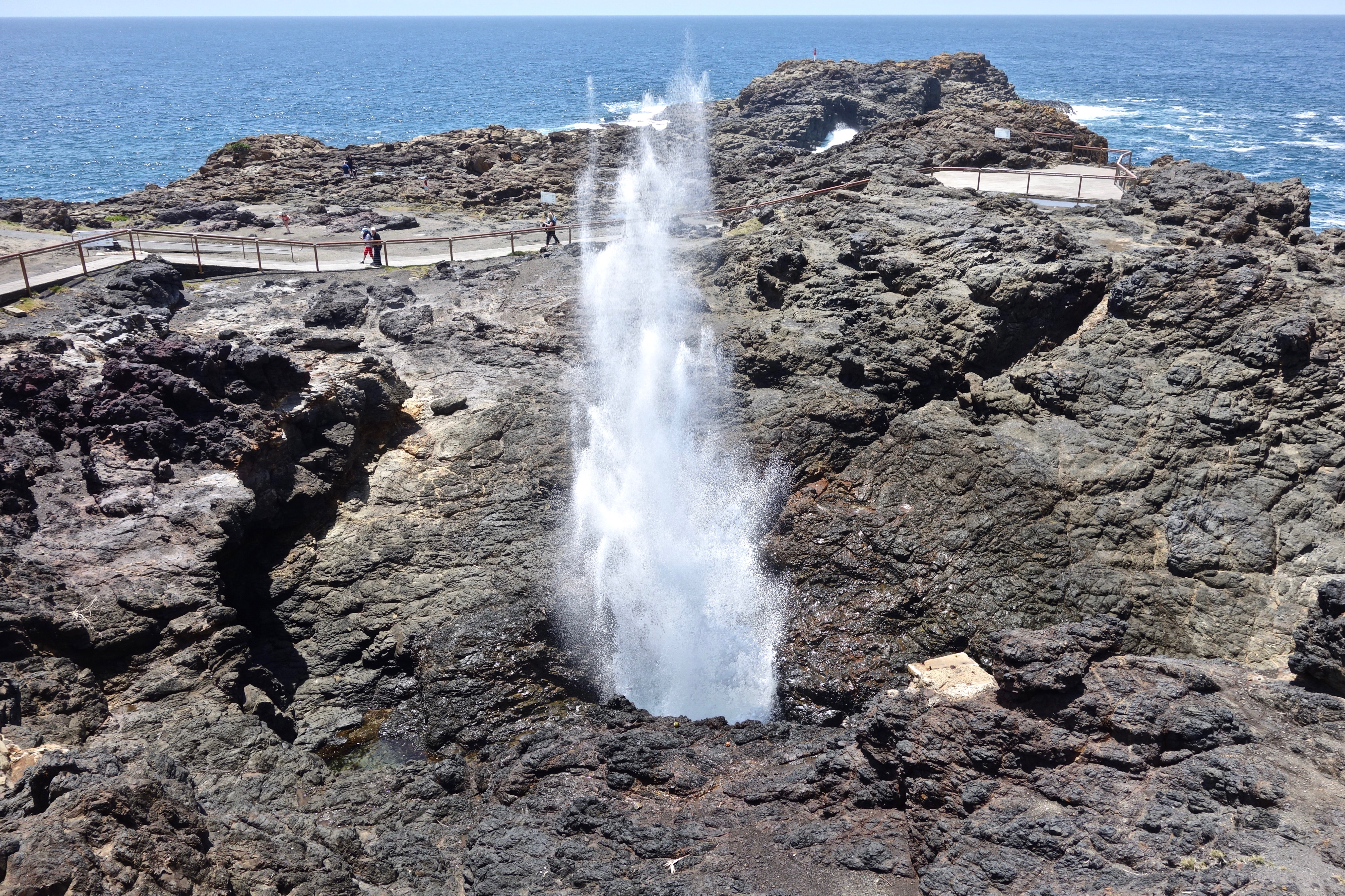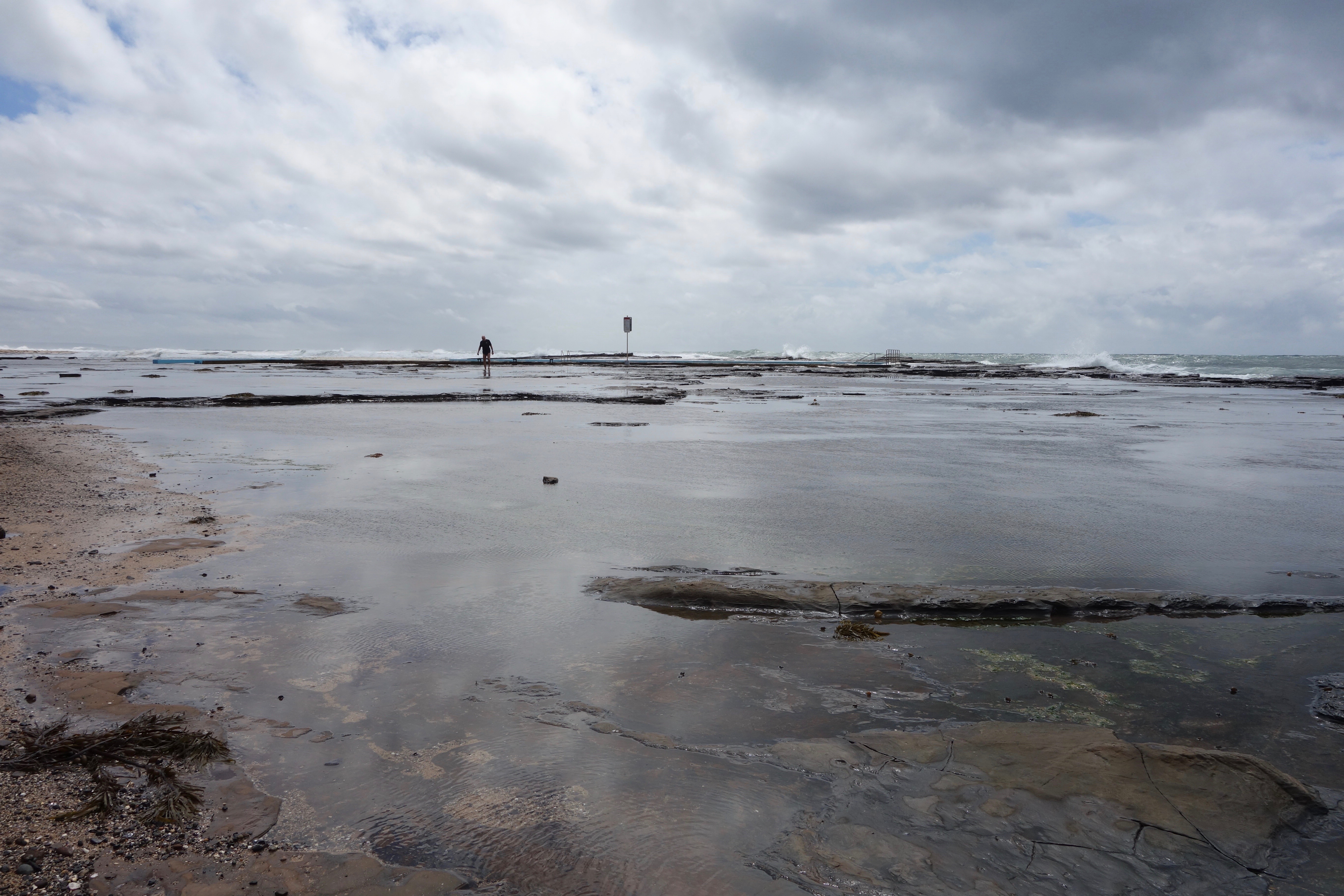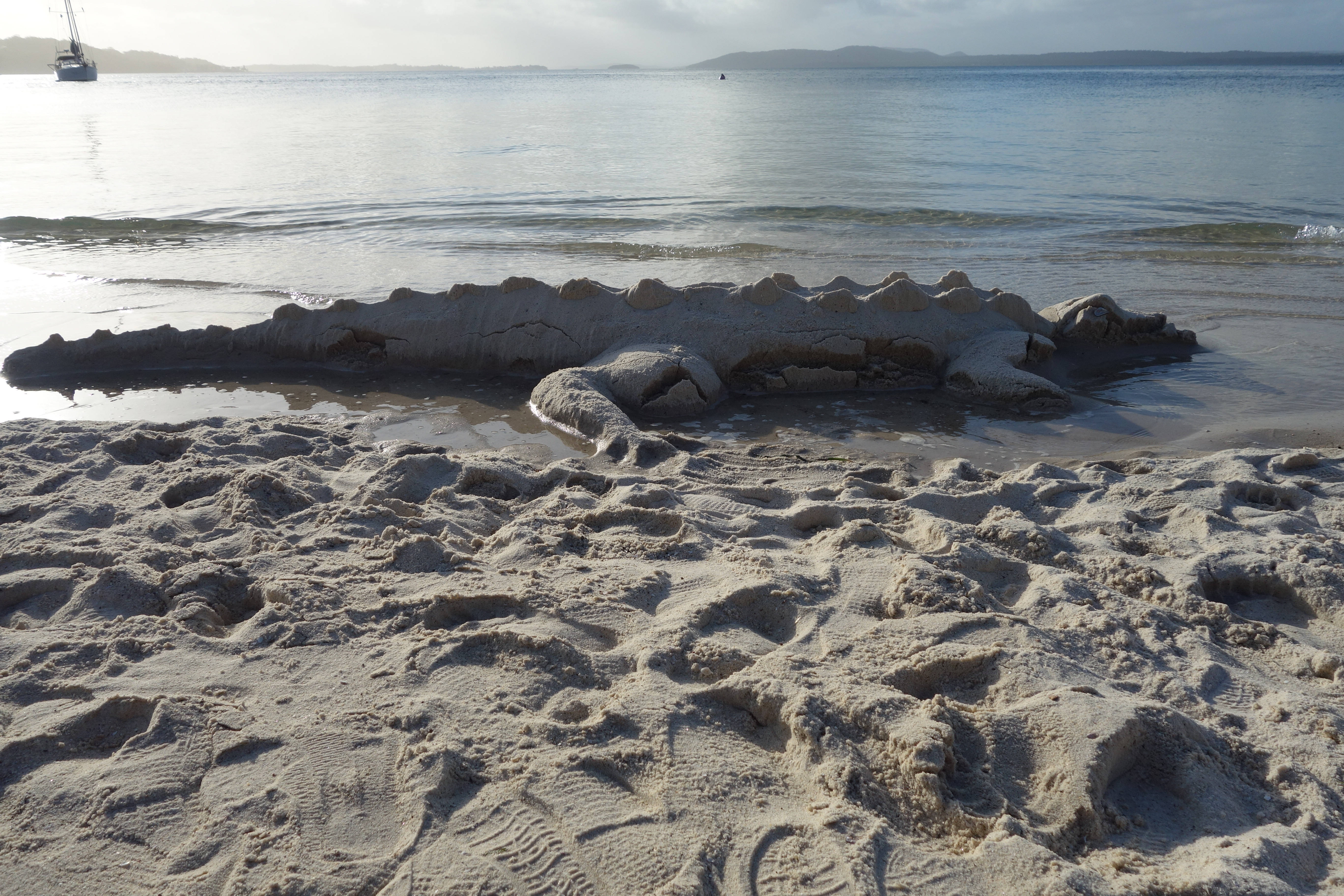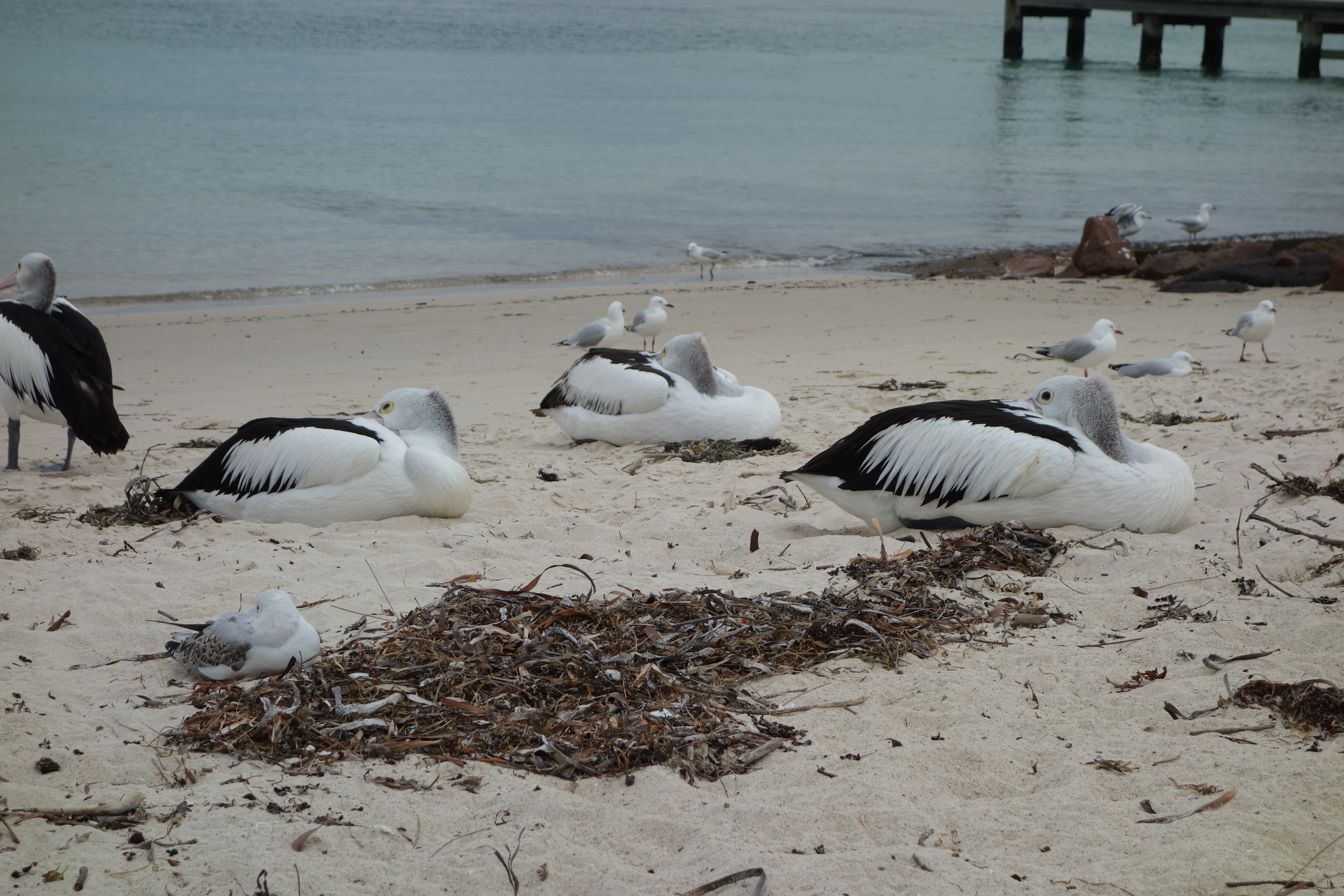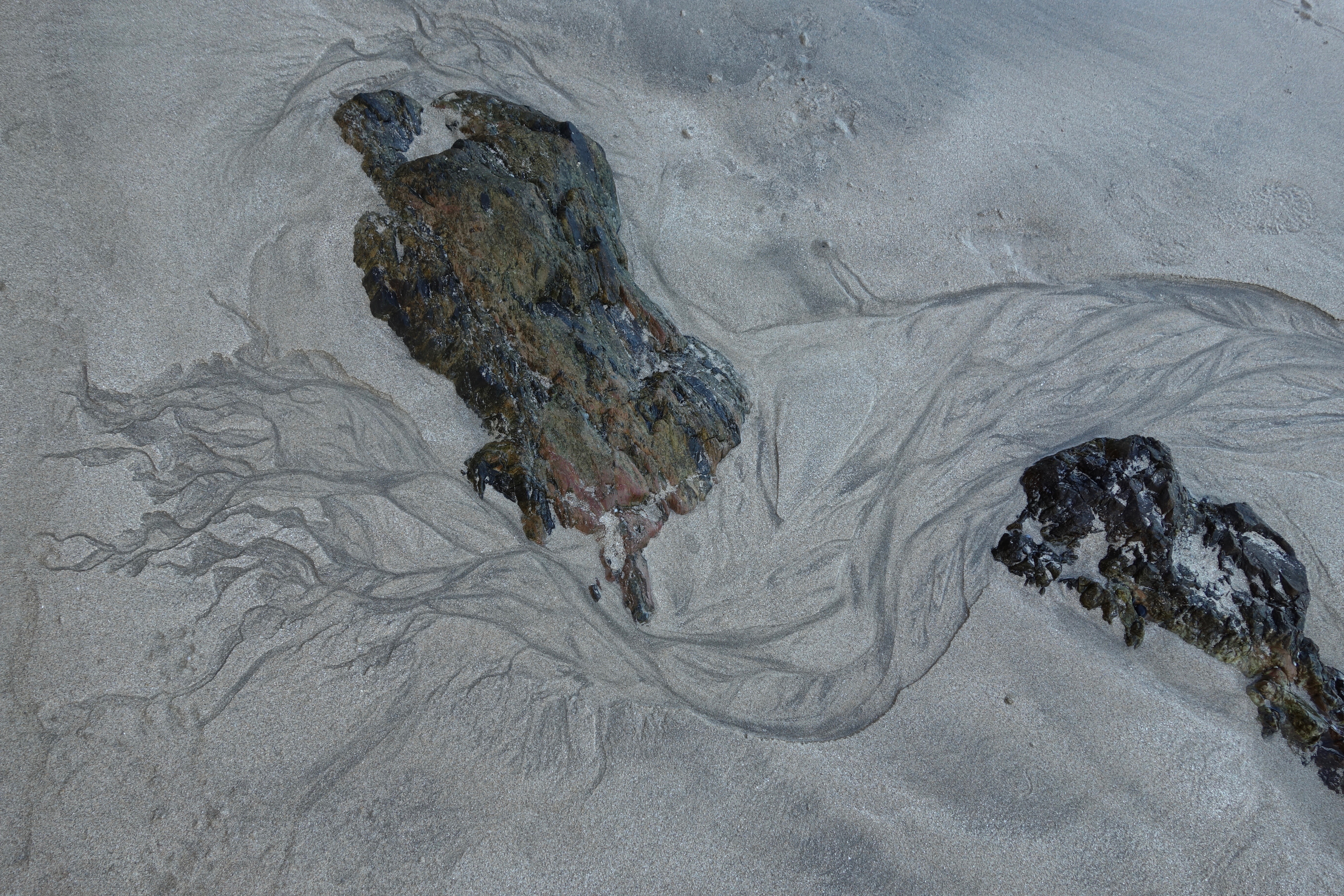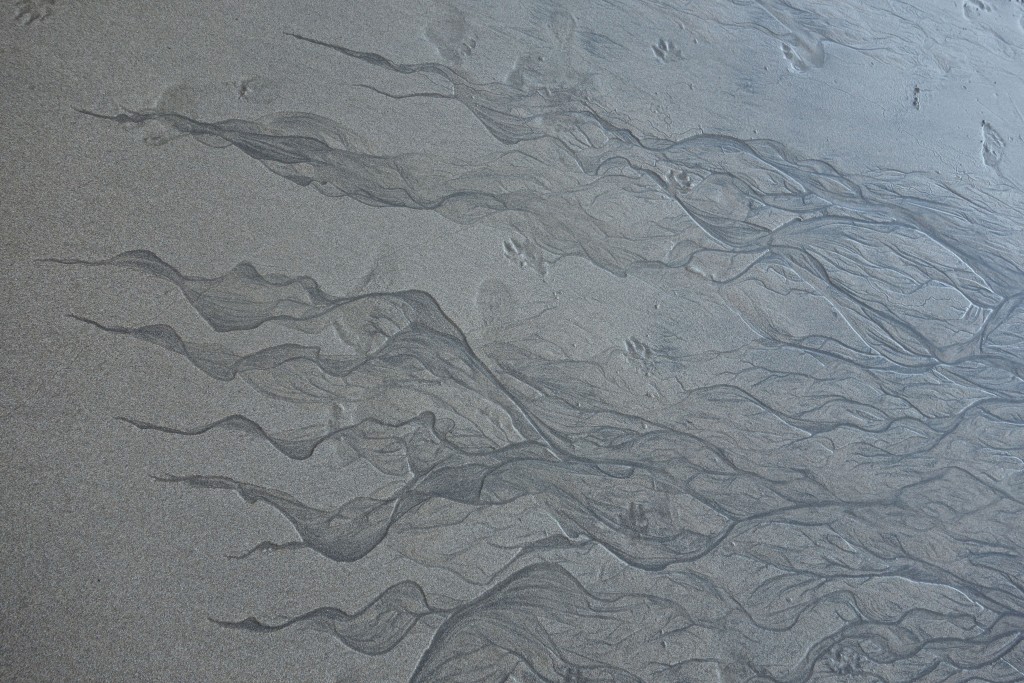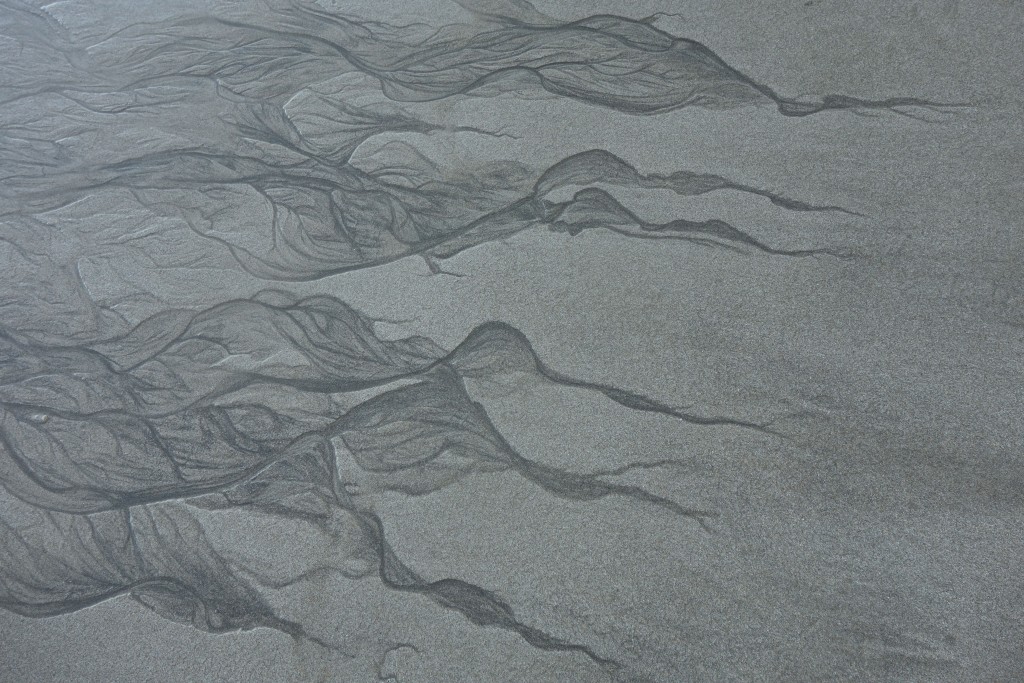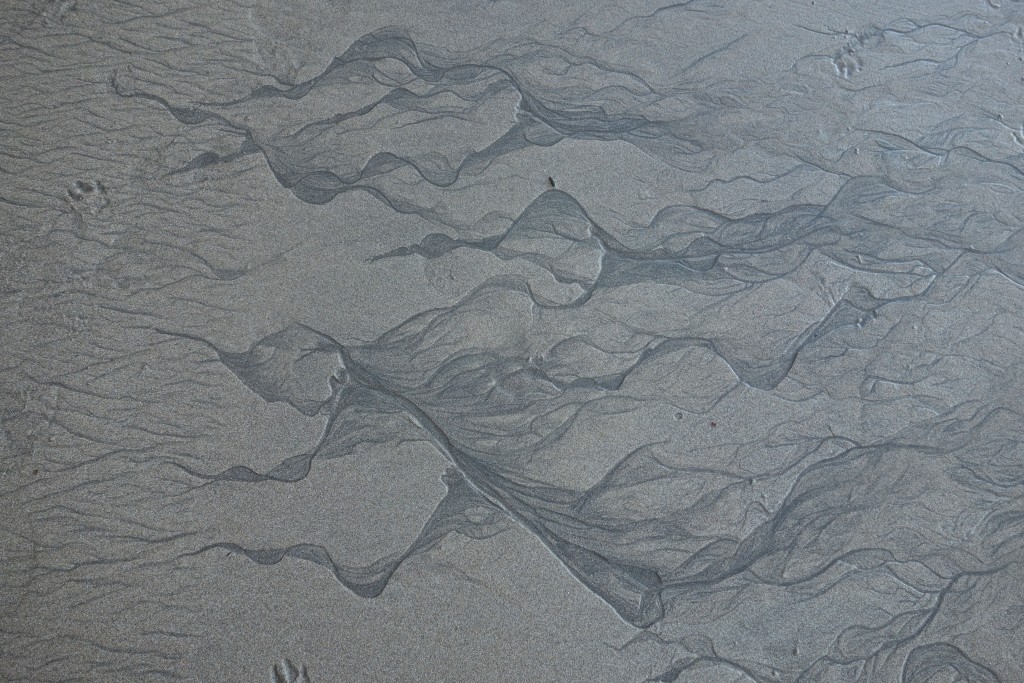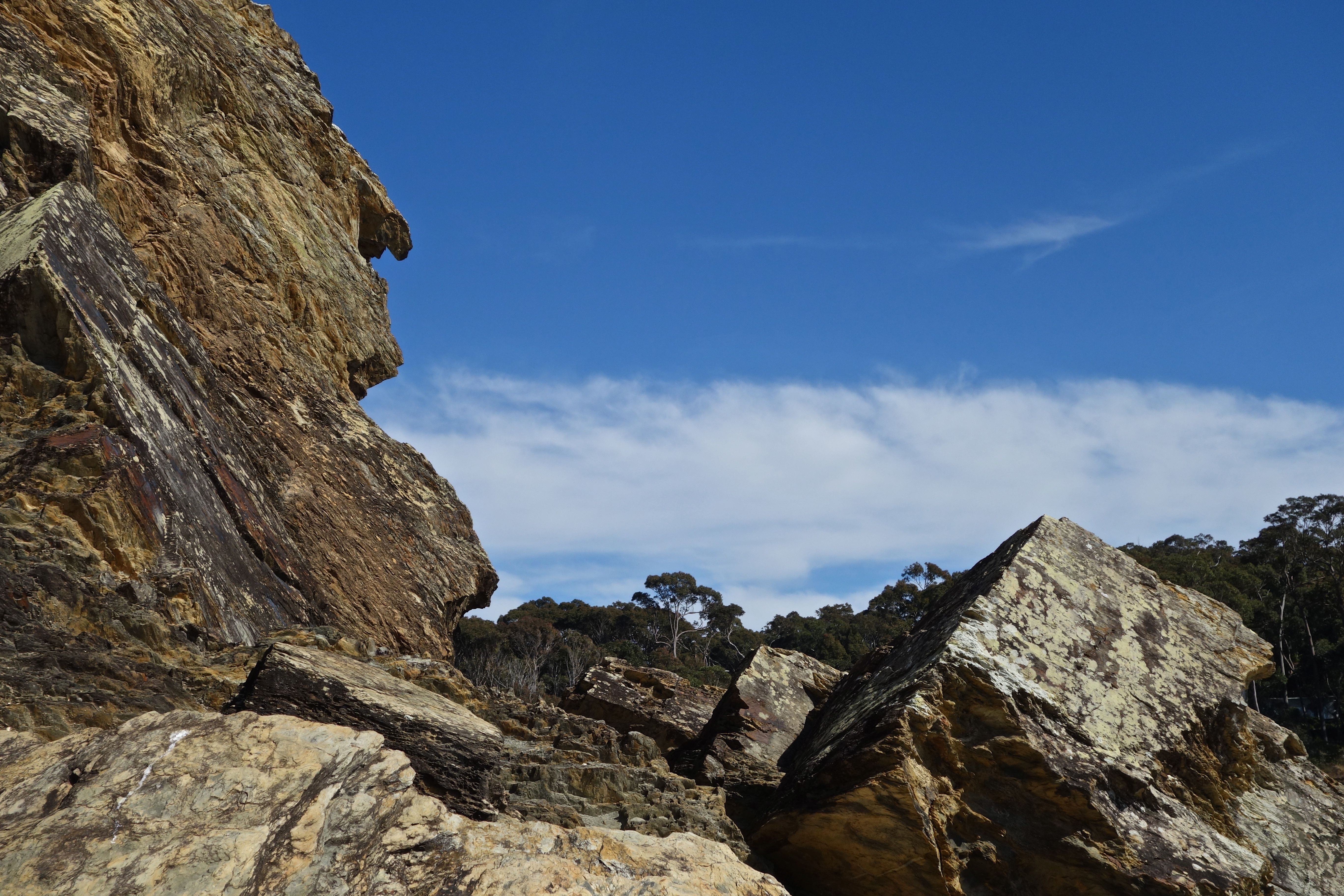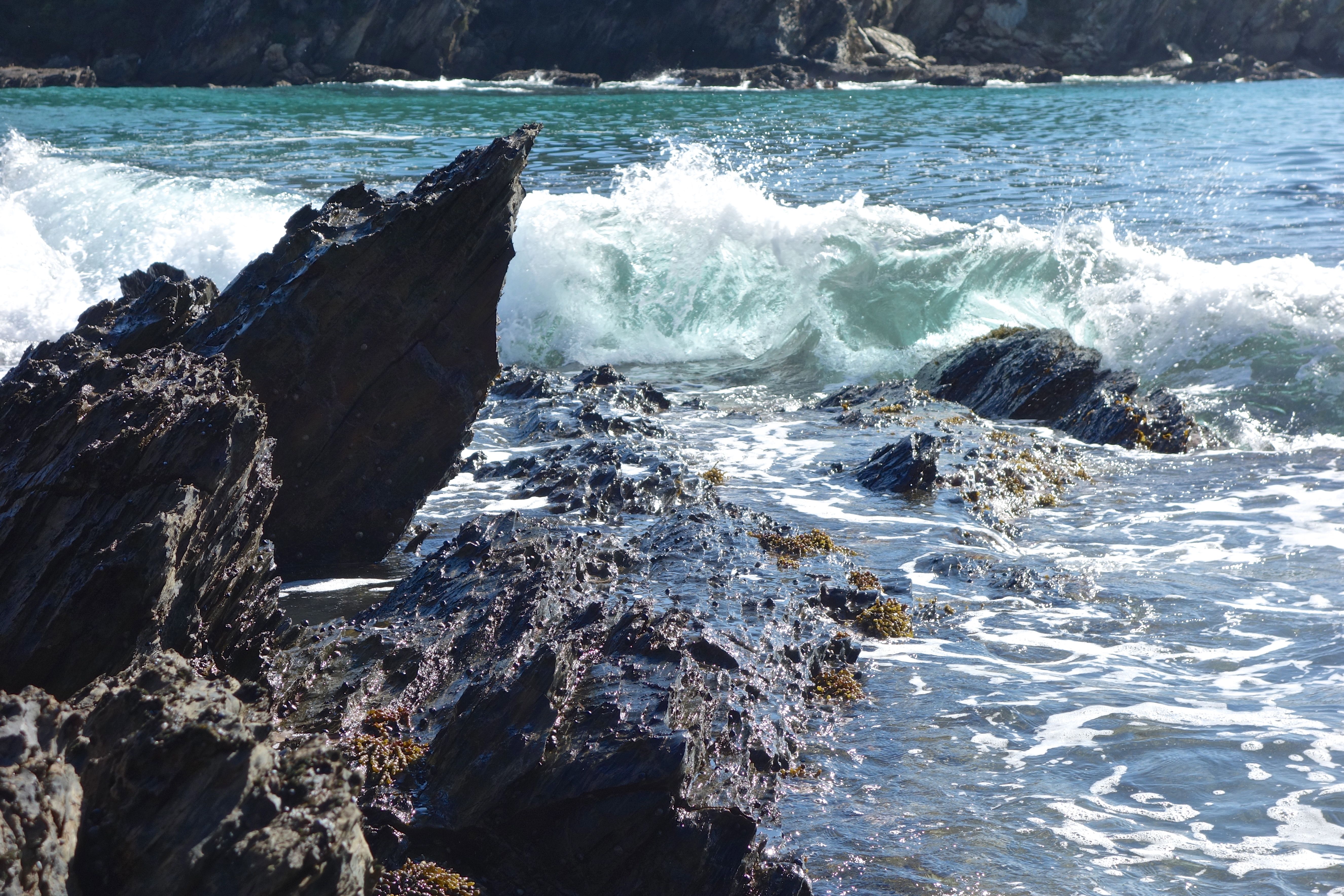I recently had a bathroom renovated and had to remove this sign which had been stuck to its wall for years. (I don’t live near the sea.)

I haven’t put it on the new wall, so now it sits abandoned in a bedroom where I read it every time I walk past. I’ve never stopped believing what it says.
In recent months I’ve spent time on the beautiful beaches of New South Wales, and just this last weekend as I walked the length of Lilli Pilli beach, I thought of my sign and realised that it was true, all my pitiful thoughts were washing out with the waves.
There were rewards even for resting my eyes on the water in this shallow bay of Lilli Pilli Beach where the sea near the shore is turquoise.
By the sea, natural beauty fills my head and heart to the brim. There’s no room for anything negative, only praise. Just look at these three tubes protruding from the sand. I know little about them but a search leads me to believe they were built by worms. Amazing, fragile structures.
Further up the coast is Kiama and the Devil’s Blowhole, a gap in the cliff rocks where waves come rushing into a cave below and shoot up through the hole like a fountain. The spout has taken a few lives over the centuries, but today a fence ensures that as long as I stay behind it, my worries will be washed away but I won’t!
Even when the sea is not turquoise or even blue, it can still have a unique beauty. This steel grey rock pool at Coledale in Woollongong, the biggest rock pool I’ve ever seen, reflects the expanse of grey clouds in its smooth grey surface and takes my breath away. One old man was swimming in the sea baths while I was there. It wasn’t a warm day. But he had the whole baths, this whole part of the ocean, to himself.
While we all leave our footprints on the beach – the loneliest stroller is aware of all those who strolled before her – sometimes humans can leave behind something admirable. Like wandering minstrels, wandering artists can enhance nature, and out of the kindness of their hearts make a sand sculpture, a piece of public art, temporal as it will be. I passed this crocodile at the water’s edge in Port Stephens late one afternoon and felt very lucky to catch it before the incoming tide broke it up completely.
But the best moments are when I see real creatures on the beach. On a shore near the old Nelson Bay lighthouse (now the Inner Light Tea Rooms!) these pelicans and seagulls made my day with their sleepy poses and big doll eyes.
Back in the city, far from the sea, all I have left is my sign to remind me that worry is inevitable but relief can be had if I can get to a beach. (The nearest one is just two hours’ drive away…)
*

